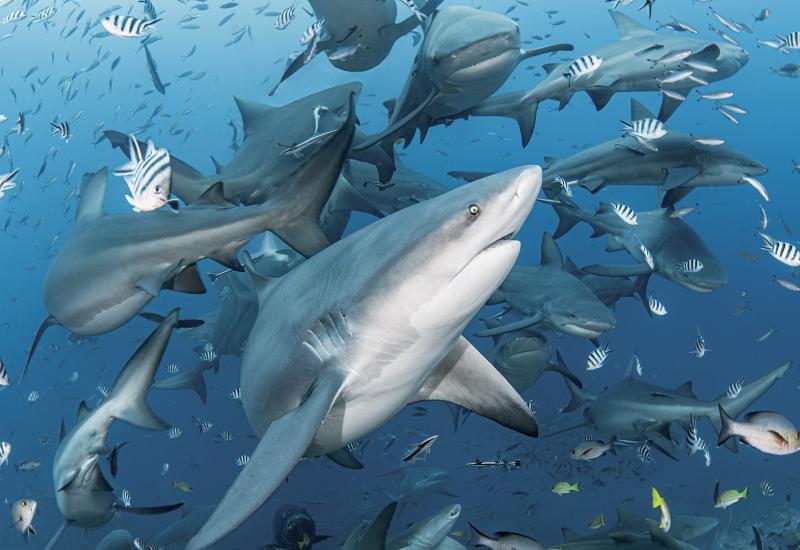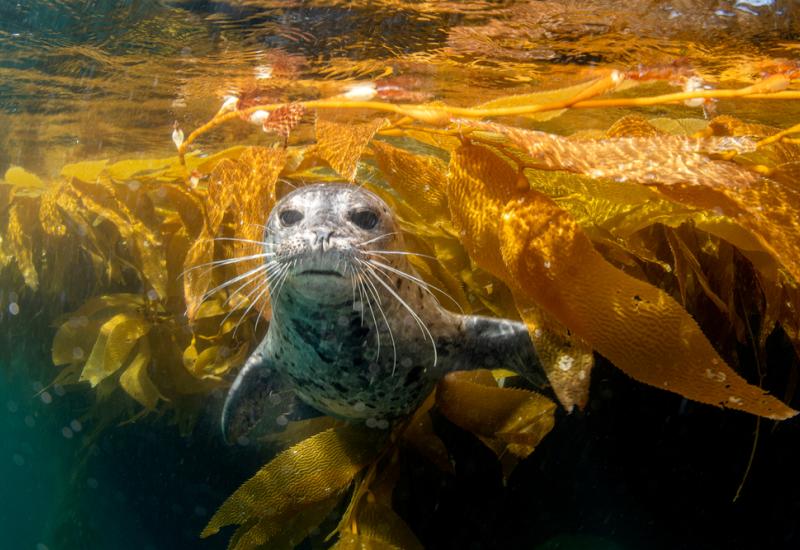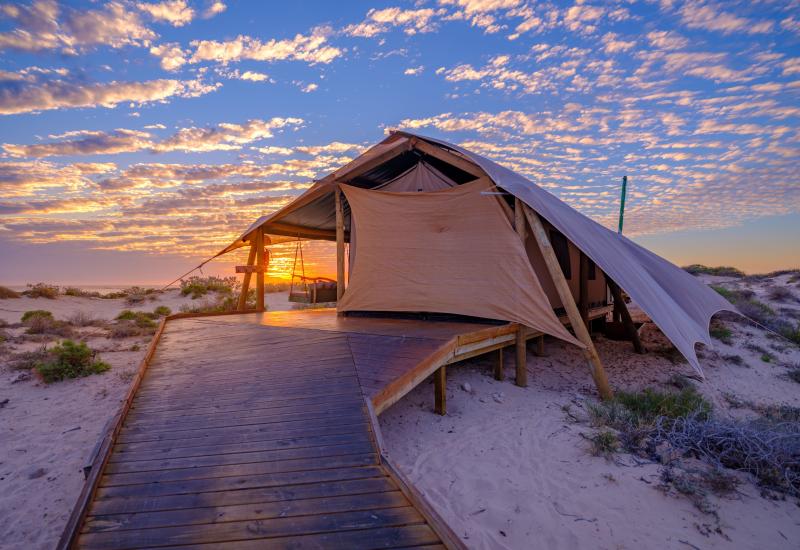Whales: Where To Swim With The Mysterious Dwarf Minkes
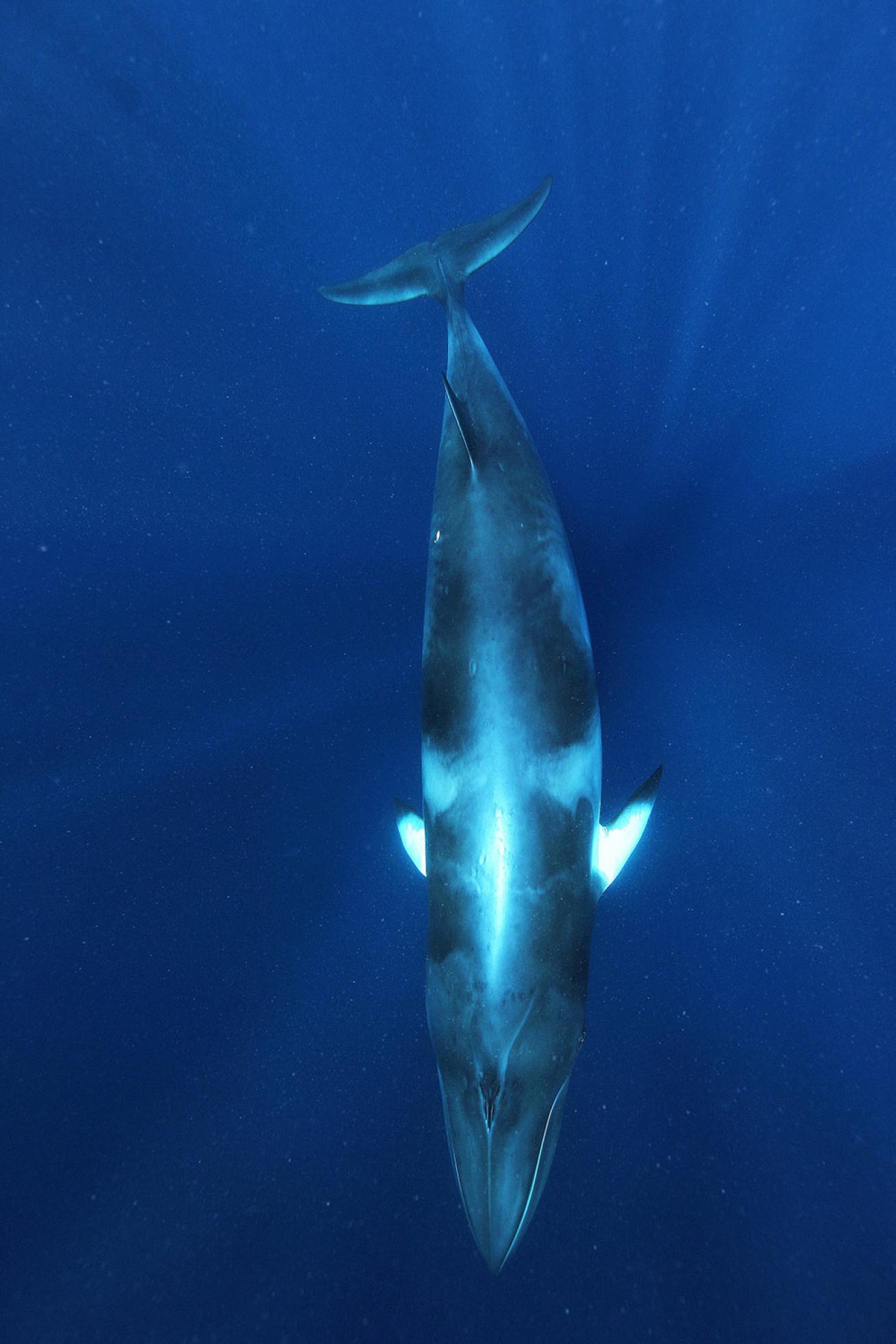
Vanessa MignonMy first view upon getting in the water was of this minke whale cruising slowly below us.

Vanessa MignonMinke whales are considered to have the most complex color pattern of any baleen whale. Their body is a combination of a light, shiny, metallic-gray color on the back and head, a darker gray band around the neck, a white shoulder area and a white flipper with a dark tip.
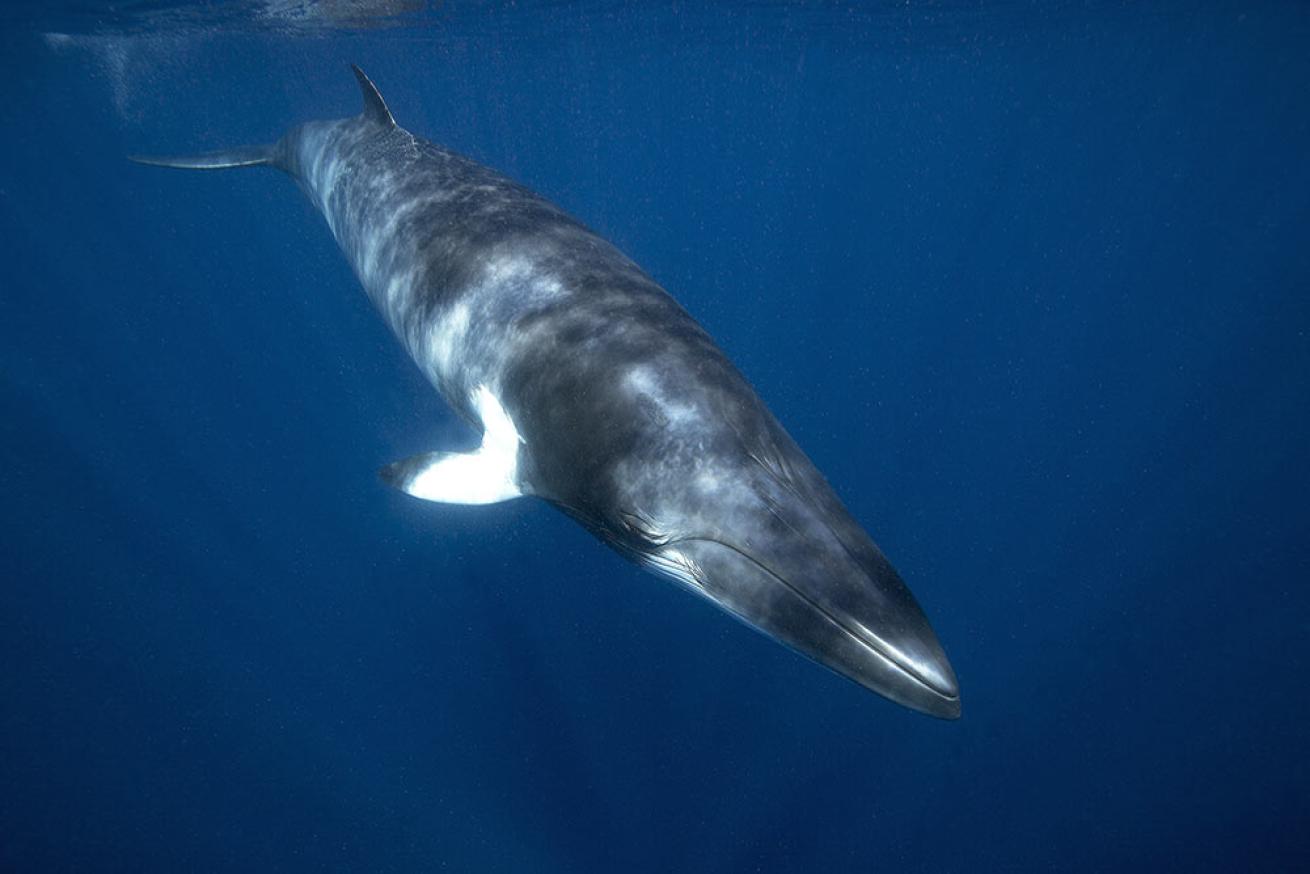
Vanessa MignonAs time went by, the whales appeared to get more comfortable, and as their confidence grew, they moved closer to us.

Vanessa MignonOn one occasion, one of the whales came straight in my direction, rolled slightly on its side and looked at me.
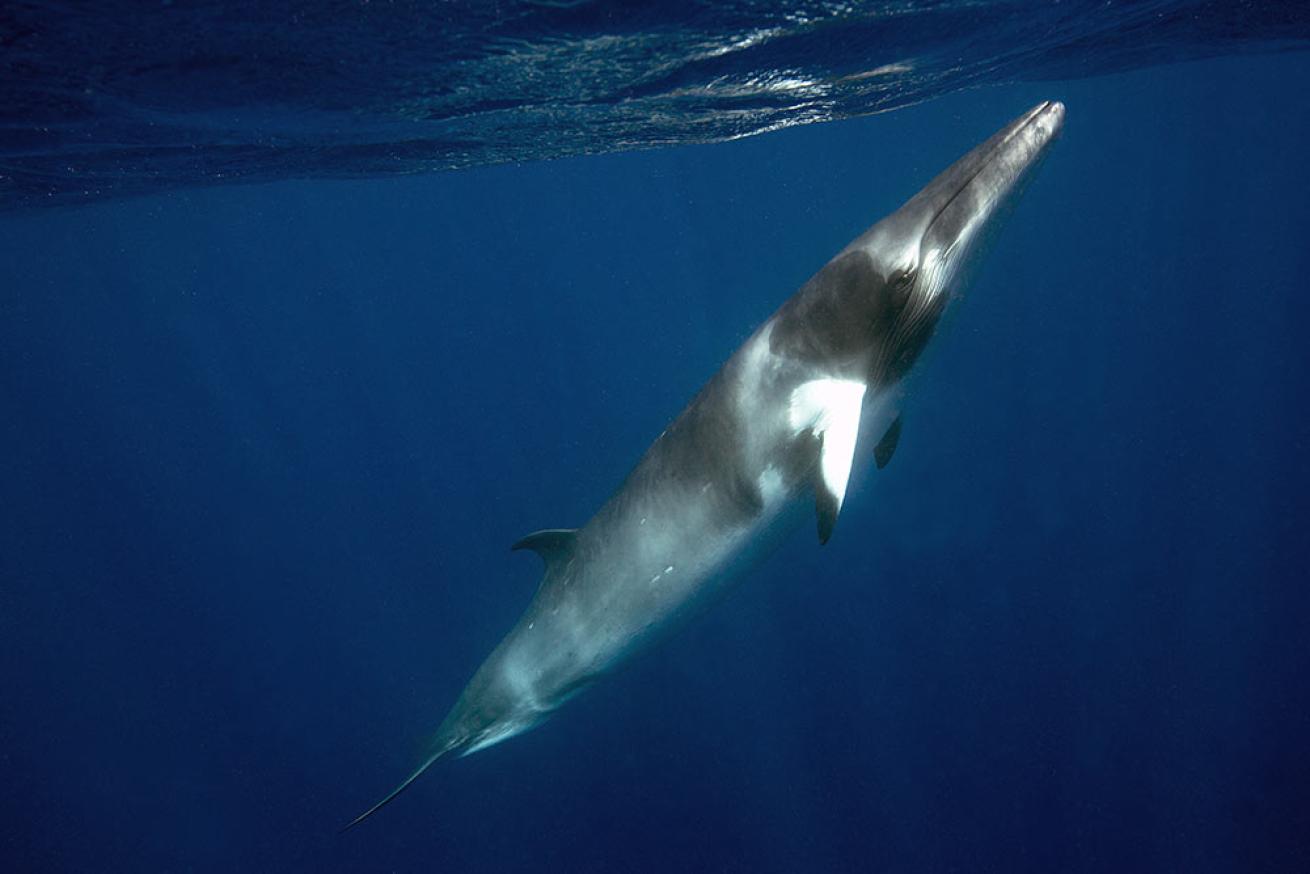
Vanessa MignonAt the end of the trip, I was left wondering who was actually watching whom.
I have been fortunate to swim with various marine mammal species over the years, and in my experience it usually takes a fair bit of work, patience and luck to get close to them. So I was doubtful when I heard that every year, between June and July, dwarf minke whales would gather in the northern Great Barrier Reef and voluntarily chose to approach boats and swimmers.
Of course, I had to go and check it out!
I joined a four-day expedition at the end of June 2013. We left from Cairns and headed towards the Ribbon Reef, where most sightings have been recorded over the years. The boat eventually stopped at a site that had regularly proven to be good for minke encounters, and amazingly, it didn’t take long for a couple of whales to appear!
We geared up in a rush, so excited to already have whales around us. Two long ropes were placed at the back of the boat, and we were asked to hold on to them and float at the surface. The crew explained that the ropes made the swimmers’ position more predictable creating a better encounter with the whales. Rapid movements were to be avoided, and of course swimming towards the whales or chasing them was a big no-no.
Straight away I was able to see the distinct shape of two minke whales cruising slowly about 33 feet down. They were beautiful. Their sleek aerodynamic body appeared to be streamlined to perfection as they glided effortlessly in the water. Each pass gave me the opportunity to appreciate why minke whales are considered to have the most complex color pattern of any baleen whale. Their body is a combination of a light shiny metallic gray on the back and head, a darker gray band around the neck, a white shoulder area and a white flipper with a dark tip.
As time went by, the whales appeared more comfortable around us and as their confidences grew, they got closer. On one occasion, one of the whales came straight in my direction and when it was about 10 feet away, it rolled slightly on its side and looked at me. As we stared at each other for a few seconds, I felt consciousness and acknowledgment from this whale.
Each subsequent swim was different in duration, number of whales and behavior observed but the inquisitive nature of the dwarf minkes made each interaction very special. After a four-day trip, I was left wondering who was actually watching whom. Each encounter happened on the whales' terms, and it decided to come and check us out. There was absolutely nothing done (or that could be done) to attract them or push them towards the swimmers.
The whale experience was enhanced by the fact that we had a volunteer from the Minke Whale Project on-board to share her knowledge about the whales.
The local whale swimming operators are focused on the conservation of these creatures and have teamed up with researchers of the Minke Whale Project, based at James Cook University, who, while on board, educates passengers, records whale sightings and collects a range of data for ongoing studies of the whales’ population, behavior, and potential impacts associated with tourist interactions.
Tourists are invited to contribute to the research by donating copies of their underwater photos, as well as sharing details of their observations. Underwater photos and video footage are used to identify individual whales, thanks to the whales’ unique and highly detailed color patterns and markings. The photo-ID study contributes to monitoring the distribution, social groupings and movements of the minkes. This ecotourism initiative and partnership have allowed the Minke Whale Project team to study and learn more about the enigmatic dwarf minkes.
To this day, the taxonomic status of dwarf minke whales is unresolved. They are found only in the Southern hemisphere, but interestingly they are regarded as a subspecies of the northern hemisphere minke whale. Dwarf minke whales can be seen in the Great Barrier Reef between March and October, however about 90 percent of the sightings take place in June and July. This it is the only known predictable aggregation of these whales in the world.
The Minke Whale Project, established in 1996, conducts multi-disciplinary research into dwarf minke whale biology, the social and economic values of the whales and the sustainable management of swim-with-whales tourism. The research team works collaboratively with tourism operators, Reef managers and wildlife conservation NGOs.
Areas of research include total population size, migratory movements, life span, feeding grounds, birthing ground, and why they seasonally visit the Great Barrier Reef. There has been no record of them feeding there but courting behavior has been observed and a few small calves have been seen over the years, suggesting that the Great Barrier Reef could be a mating and birthing ground.
Love big animals? Check out our picks for World's Best Big Animal Encounters.
This year, the Minke Whale Project researchers tagged four dwarf minkes for the first time in the hope to discover where they spend the Southern Hemisphere summer, and therefore what the threats could be for those whales. For example, if they spend their summer in Antarctica, these whales could be at risk of whaling (especially since they appear to be so curious around boats) and be included in the Japanese quota. With so little information available on the dwarf minke numbers, it is difficult to define what a sustainable catch is, what the impact of whaling could be on the dwarf minke population and what conservation measures are required.
As of mid-August, those whales had left the Great Barrier Reef and were heading south along the east cost of Australia. The tags indicated that one of them, a young whale called Spot, had swum nearly 1,900 miles in less than 30 days. As at early September, only two tags were still transmitting and indicated that both whales were off the west coast of Tasmania.
We can only hope with further research and aid by divers that we can not only learn more about these beautiful creatures but also figure out how to protect them.


